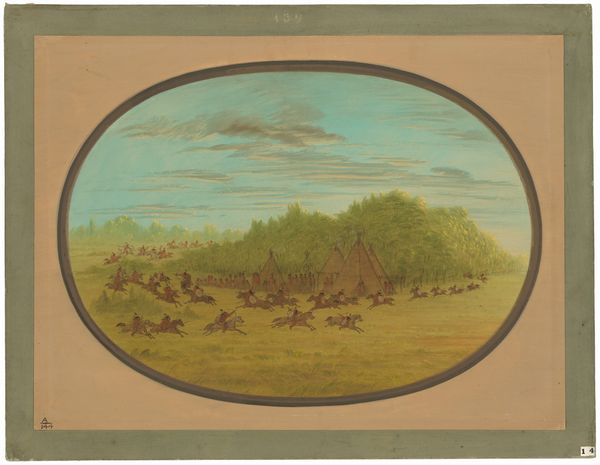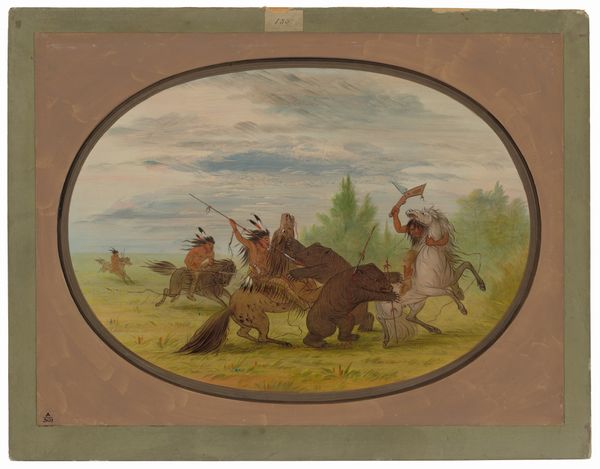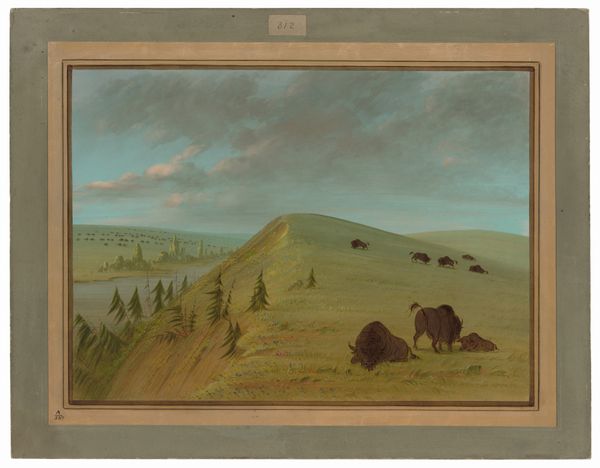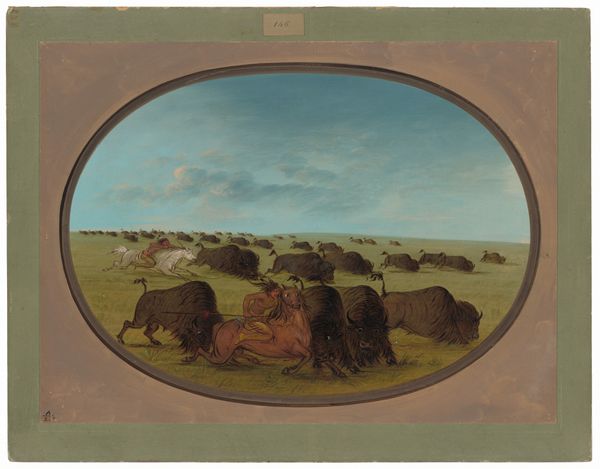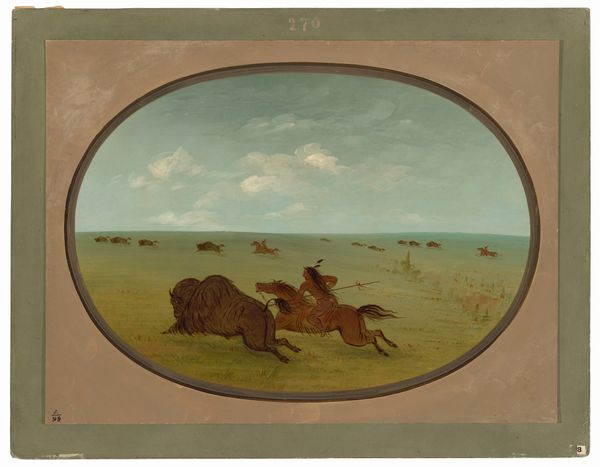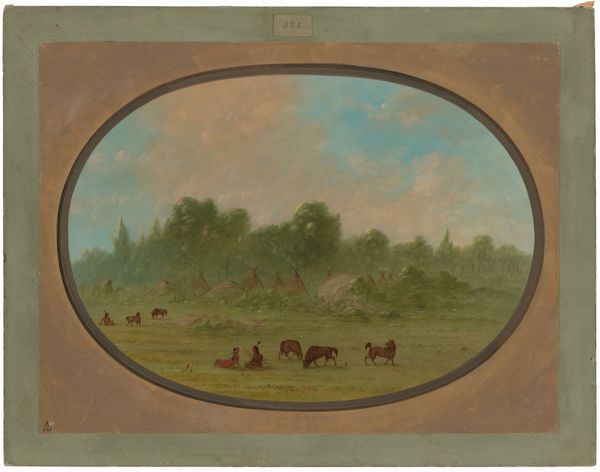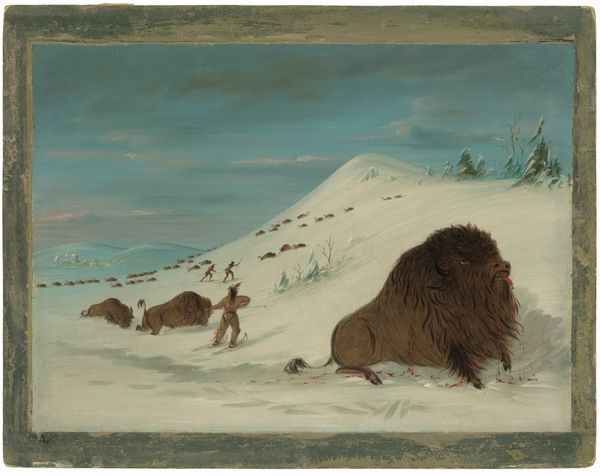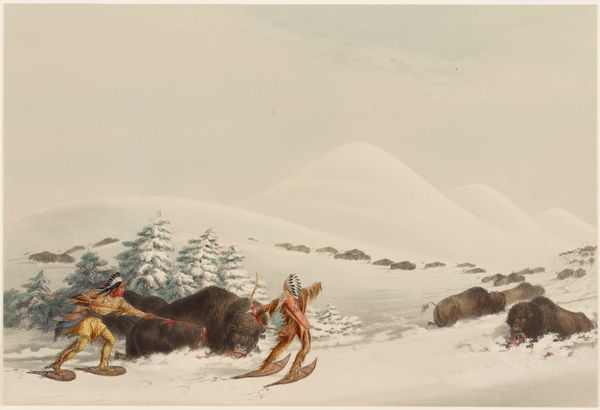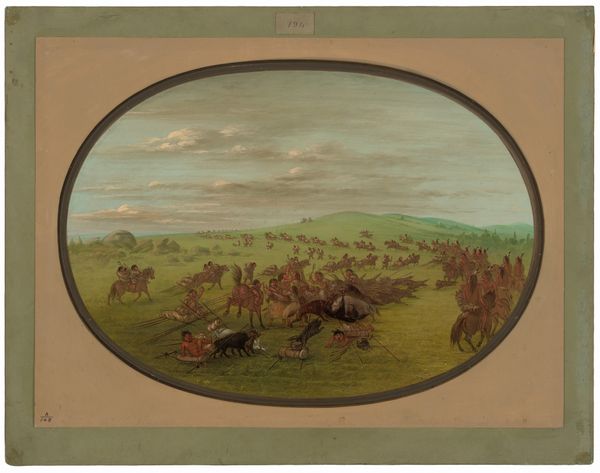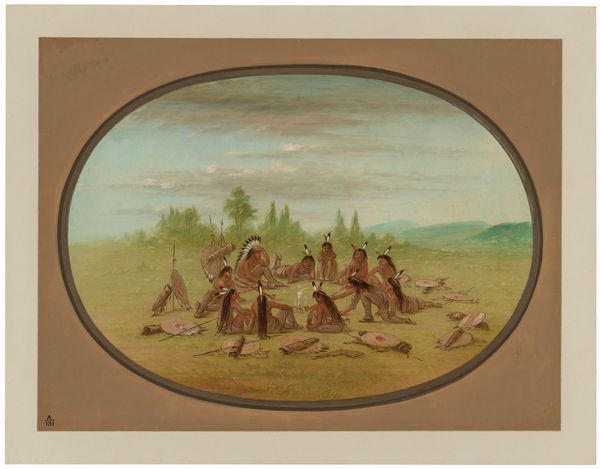
gouache
#
water colours
#
narrative-art
#
gouache
#
landscape
#
watercolour illustration
#
watercolor
Dimensions: overall: 47.5 x 63.3 cm (18 11/16 x 24 15/16 in.)
Copyright: National Gallery of Art: CC0 1.0
Curator: Here we have George Catlin’s "Buffalo Chase in the Snow Drifts - Ojibbeway," created sometime between 1861 and 1869 using watercolors. Editor: Brrr, you can practically feel the chill just looking at it! The painting really captures the harshness and desperation of a winter hunt. I imagine that icy wind biting at your cheeks… Curator: Indeed. Catlin's work needs to be understood within the context of 19th-century westward expansion and the United States' relationship with Indigenous peoples. His paintings often romanticize Indigenous life, but they also served as a visual record of cultures that were being systematically destroyed. The act of depiction itself is laden with power dynamics. Editor: True, the "noble savage" trope is hard to miss here. But look at the energy, the struggle. It is amazing how he’s managed to catch such a dynamic scene in such a limited palette, though it almost romanticizes an encounter that has inherent and underlying imbalances of power. The buffaloes’ dark forms against the snow… you can practically feel their warm breath. I mean, think of the cold, of course, but think of the warmth, too. Curator: Exactly, and that tension highlights the complex interplay between the environment, human need, and the survival strategies of both the hunters and the hunted. Consider the historical moment in which this was painted, particularly during the era of westward expansion and ecological transformation and its subsequent influence in the systemic and violent dynamics that shape Indigenous communities still to this day. Editor: Absolutely. And perhaps he chose watercolour because of that inherent ‘flow’ to it, you know, which seems to work perfectly with snow. It almost blends onto the page in a blurry sort of way, as if the paint isn’t willing to settle. Curator: The very fragility of the watercolor medium mirrors the vulnerability of the lifeways he depicted. It is easy to see, still, his dedication to a certain… well, truth of witness. A form of… record, so to speak. Editor: Agreed. Looking at it again, you can't help but feel for all involved – the hunters, the hunted, the land itself… it's a harsh ballet of survival, captured in fragile watercolour. Curator: And in contemplating that struggle, perhaps we can better recognize the ongoing challenges faced by Indigenous communities and the importance of centering their voices in conversations about environmental stewardship and cultural preservation. Editor: A poignant thought to carry with us, indeed.
Comments
No comments
Be the first to comment and join the conversation on the ultimate creative platform.


